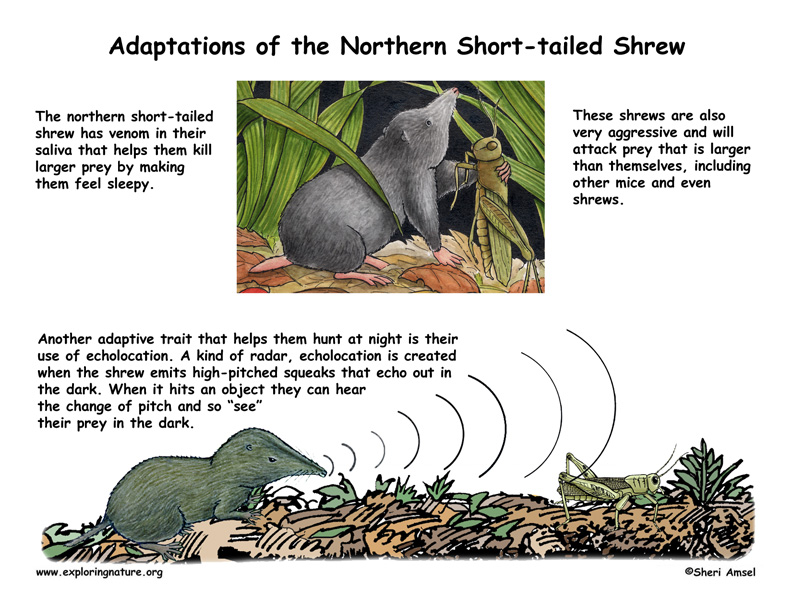

Adaptation in a population of living things happens as a result of an adaptive trait. This is any inheritable trait that increases its survival rate so that it can live longer, reproduce longer, and have more offspring (that also have that trait). Adaptive traits can improve animals finding food, make a safer home, escape predators, survive cold or heat or lack of water.
The northern short-tailed shrew has venom in their saliva that helps them kill larger prey by making them feel sleepy. This is an important physical adaptation because shrews are the smallest carnivorous mammals on Earth. Another adaptive trait that helps them hunt at night is their use of echolocation. A kind of radar, echolocation is created when the shrew emits high-pitched squeaks that echo out in the dark. When it hits an object, they can hear the change in pitch and therefore “see” their prey in the dark. These shrews are also very aggressive and will attack prey that is larger than themselves, including other mice and even shrews. These physical and behavioral adaptations help the shrew survive in its habitat.
For Discussion and Critical Thinking:
The northern short-tailed shrew has adaptive traits that help it survive in its habitat.
1. Name two of the northern short-tailed shrew’s adaptive traits and how they help it survive:
2. Name two other animals that use venom to help catch their prey.
3. Name another animal that uses echolocation to get around in a nocturnal world. How is this animal different from the shrew?
When you research information you must cite the reference. Citing for websites is different from citing from books, magazines and periodicals. The style of citing shown here is from the MLA Style Citations (Modern Language Association).
When citing a WEBSITE the general format is as follows.
Author Last Name, First Name(s). "Title: Subtitle of Part of Web Page, if appropriate." Title: Subtitle: Section of Page if appropriate. Sponsoring/Publishing Agency, If Given. Additional significant descriptive information. Date of Electronic Publication or other Date, such as Last Updated. Day Month Year of access < URL >.
Amsel, Sheri. "Adaptations of the Short-tailed Shrew" Exploring Nature Educational Resource ©2005-2024. December 13, 2024
< http://www.exploringnature.org/db/view/Adaptations-of-the-Short-tailed-Shrew >

